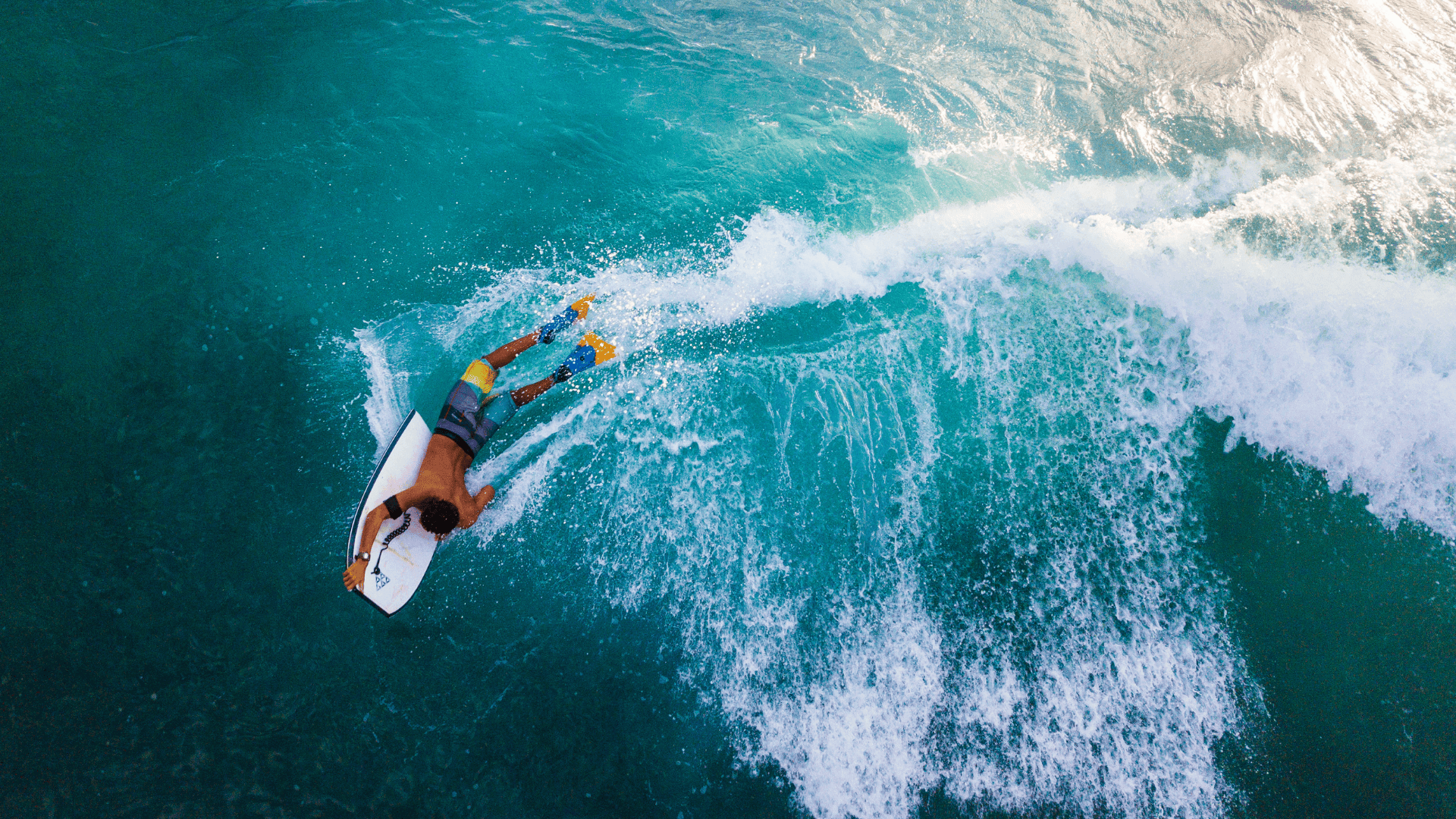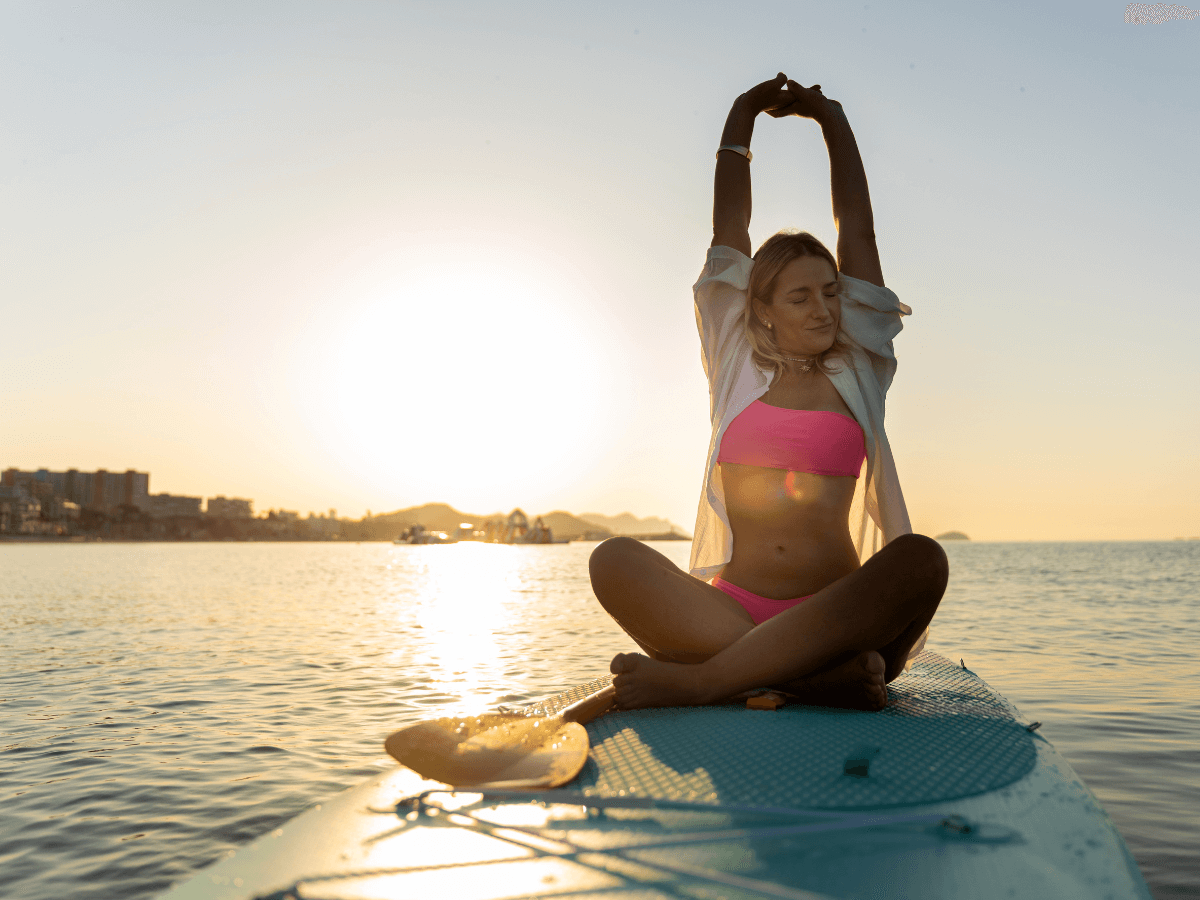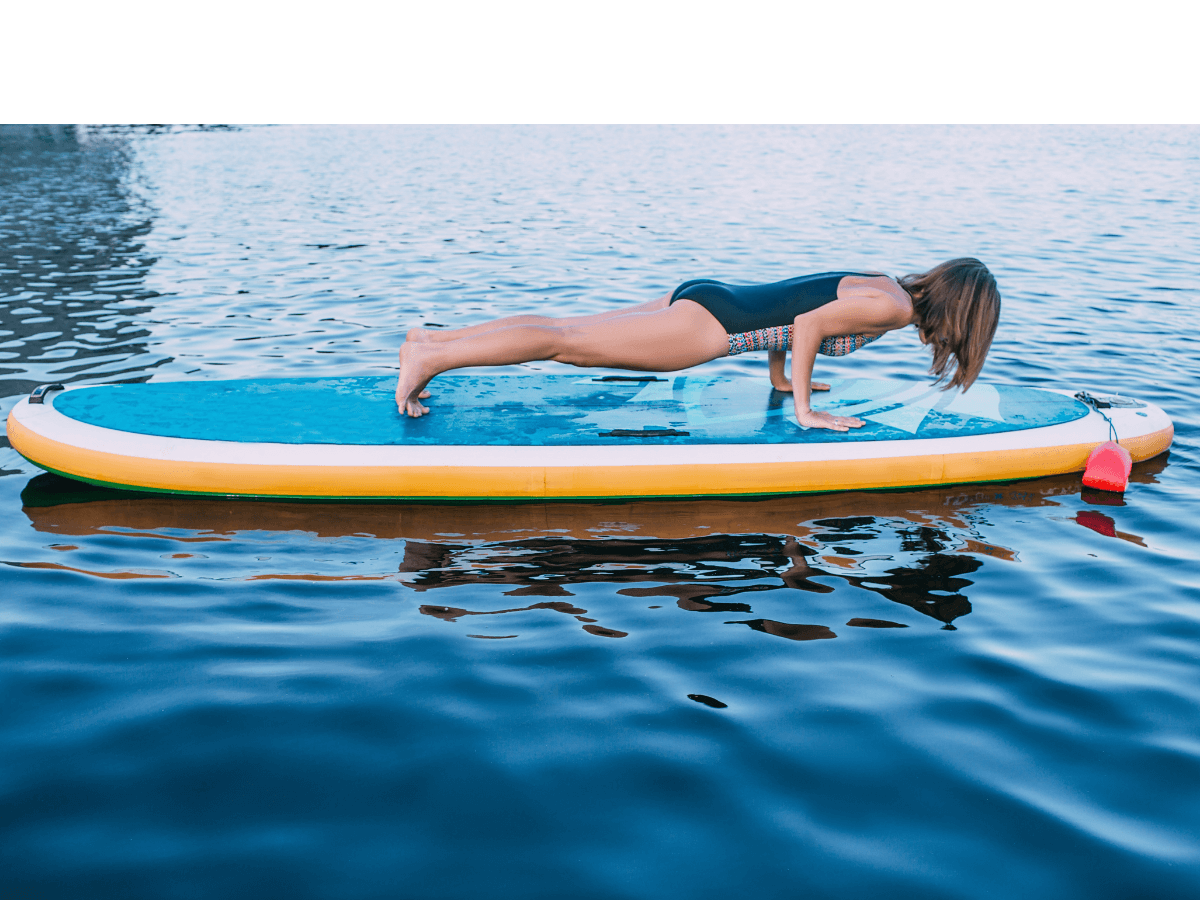Whether you’re just beginning your bodyboarding journey or are returning, having the correct bodyboarding setup catered to you is essential when hitting the waves. The right gear doesn’t just improve your performance, it boosts your comfort, safety, and overall experience in the water. However, with so many board types, accessories, and fin styles, it’s very easy to get overwhelmed. That’s why we’ve created this guide, where we’ll break down everything you need to know in an easy-to-digest way, from the must-haves to the nice-to-haves, you’ll be able to hit the beach with confidence. Let’s dive in!
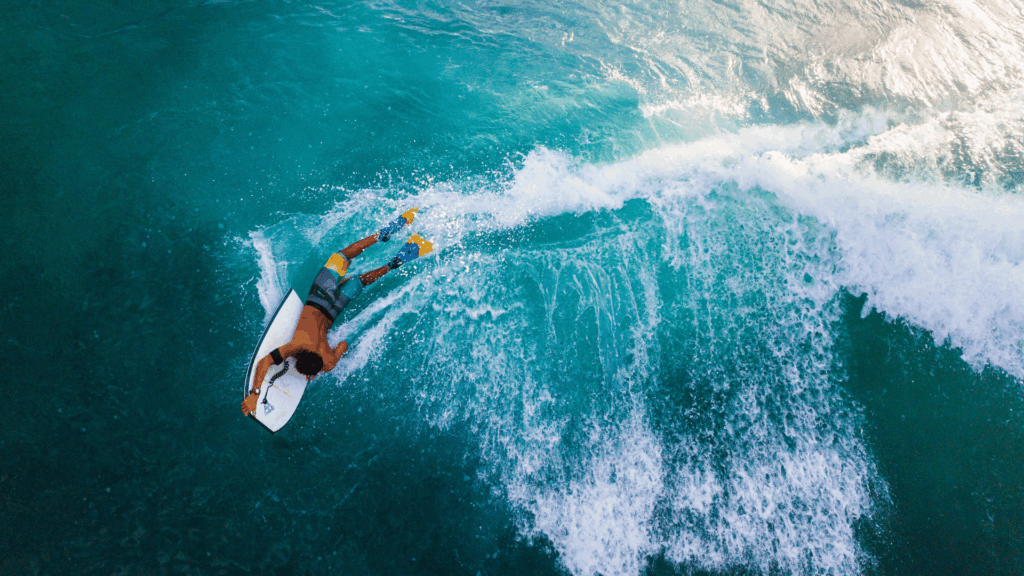
Table of Contents:
- Why Your Bodyboarding Setup Matters
- Choosing The Right Bodyboard Size & Shape For You
- Tail Types & Their Impact
- Understanding Fins:
- Why Fins are Essential
- Finding the Right Fit and Stiffness
- Fin Socks or Boots: Your Comfort & Protection
- Selecting the Correct Leash:
- Bicep vs Wrist Leash
- How To Select a Durable Leash
- What to Wear Based on Water Temperature:
- Wetsuit vs Rash Guard
- Fit and Flexibility Options
- Why You Need Wax in Your Bodyboard Setup:
- Optional Extras for Grip & Control
- Beginner Vs Advanced Bodyboarding Setups
- What Changes as You Improve:
- When to Upgrade or Replace Your Gear
- Investing in the Right Bodyboarding Setup For Your Goals
- Final Tips Before You Hit the Waves
Why Your Bodyboarding Setup Matters
A good bodyboarding setup consists of the right board, fins, and accessories which work together to give you the best control, comfort, and speed, no matter what your skill level may be.
If your board is the wrong size for you, like too big or too small, you will struggle to catch waves or maintain stability. The wrong fins will lead to poor propulsion, cramping, and in some cases, blisters! And finally, skipping general essentials such as a leash can turn what should be a fun session into a frustrating one.
Your gear should match correctly with your body, your riding style, and the conditions you’d be facing. Your time in the ocean is valuable, so a well-matched setup can help you ride for longer, perform better, avoid injury, and gear failure when it matters the most.
Choosing The Right Bodyboard Size & Shape For You
Selecting the right bodyboard for you is like finding the perfect surfing friend. You need something that will match your size, style, and goals in the water. If it’s too big or too small, your experience will worsen, but if it’s just right, every wave can be extremely fulfilling.
The Basics of Sizing
There is a general rule when you select your bodyboard, which is that it should reach around your belly button when standing on the ground. But weight plays a key role too. Below is a table with the suggested board length based on your weight; however, always consider your height and wave conditions too:
| Bodyboard Rider Weight | Suggested Board Length Based on Weight |
| Under 30 kg/65 lbs | 83.82-91.44 cm/33-36 inches |
| 30-39 kg/65-85 lbs | 91.44 – 96.52 cm/36-38 inches |
| 39-52 kg/85-115 lbs | 96.52 – 101.6 cm /38-40 inches |
| 52-66 kg/115-145 Ibs | 101.6 – 104.14 cm/40-41 inches |
| 66-82 kg/145-180 Ibs | 105.41 – 106.68 cm /41.5-42 inches |
| 82+ kg/180+ Ibs | 107.95 – 114.3 cm /42.5-45 inches |
Bodyboard Shape: What It Affects
Template – Overall Outline:
Wide nose – Easier paddling and stability (perfect for beginners!).
Narrow nose – Better manoeuvrability for water tricks and control.
Tail Shape:
Crescent tail – A classic, great for control and prone riding.
Bat tail – Better speed and lift, ideal for smaller waves and dropknee.
Tips:
- When it comes to bodyboarding, bigger is not better. Having an oversized board can make it much harder to duck dive or simply turn.
- If you ride in mainly cold waters, size only slightly up for the added buoyancy you’ll need.
- If you can, always test the boards!
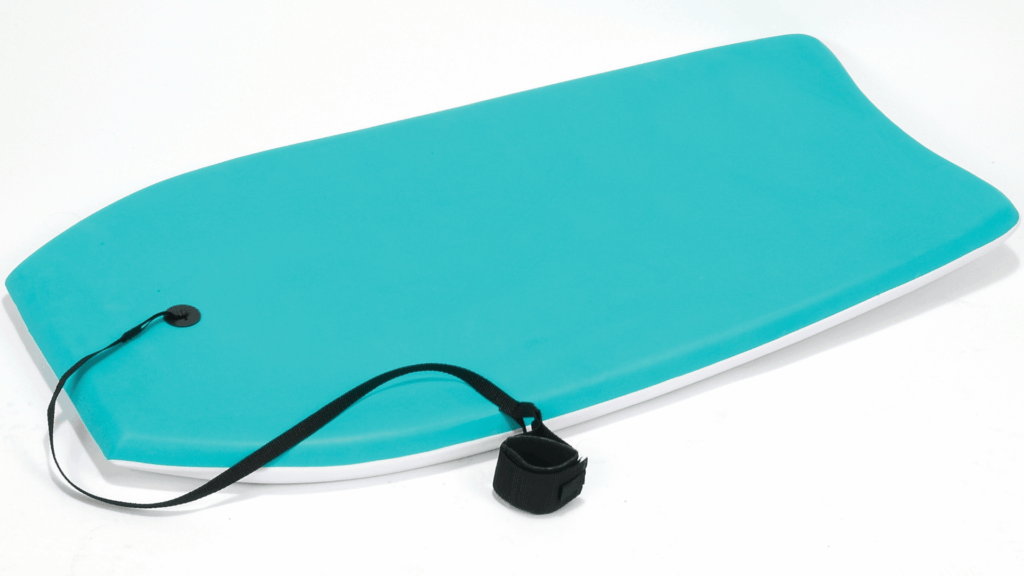
Tail Types & Their Impact
Although the tail of your bodyboard seems like a minor detail, it plays a massive role in how your board performs, as it affects how the water flows off the board, influencing speed, control, and manoeuvrability. Below is a breakdown of the most common bodyboard tail shapes and what they’re best for:
Crescent Tail
Best for: Control, prone riding, and stability.
Rider skill level: All levels.
- The crescent tail is the most versatile and popular tail shape.
- Perfect for prone riding (lying flat on your board), as it helps keep you locked in during takeoffs and carves.
- Offers smoother turns and more control in hollow waves.
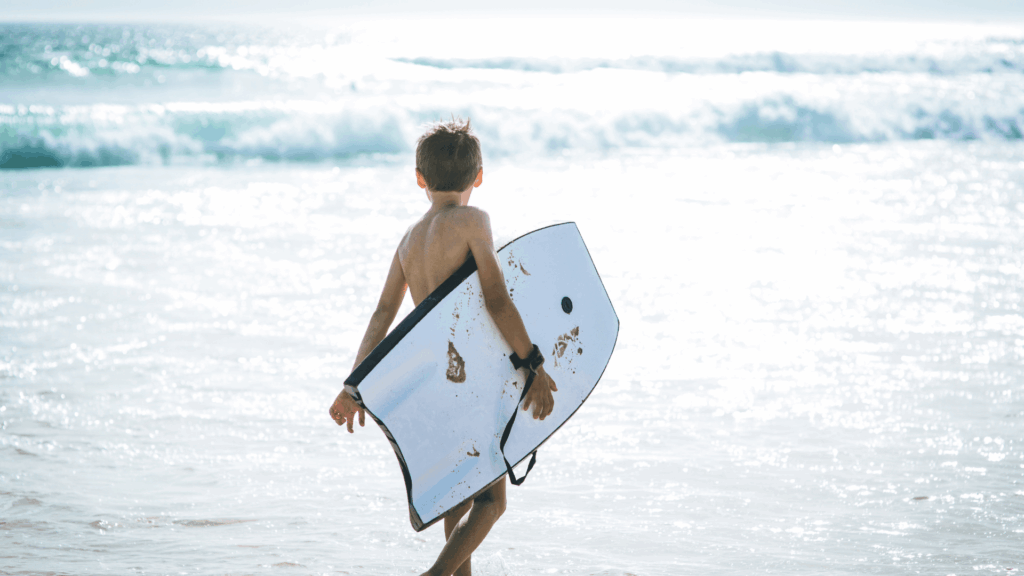
Bat Tail
Best for: Speed, lift, small waves, dropknee riding
Rider skill level: Intermediate to advanced
- The bat tail has extra surface area with points at the outer edges, which gives more lift and speed.
- Looser than a crescent tail, making it great for quick turns and playful riding.
- Due to the added lift, it performs well in smaller waves.
- An excellent choice for drop-knee riders, offering more stability.
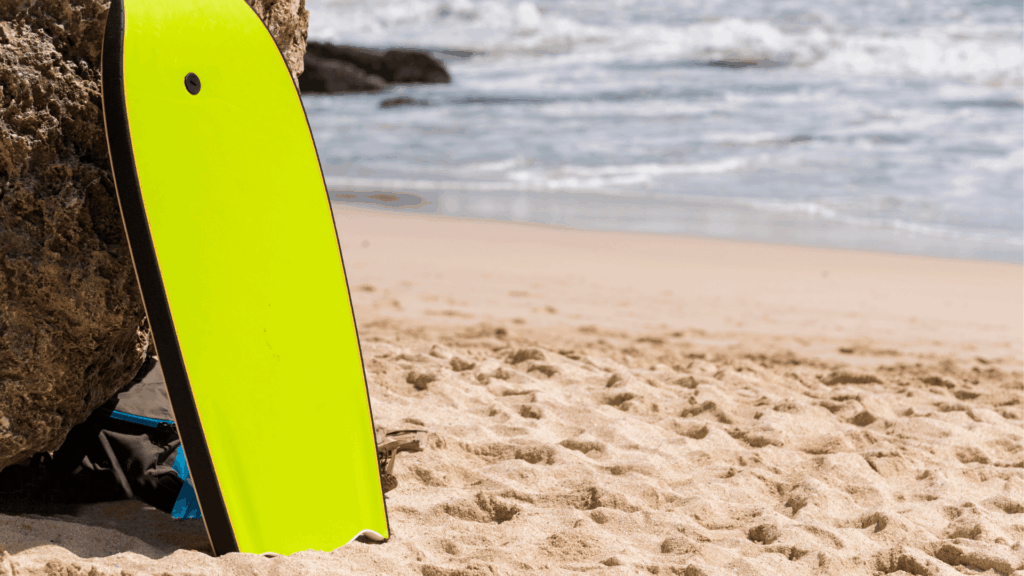
Other Tail Variations
Clipped Crescent / Delta Tail: A sharper take on the crescent for quicker release and manoeuvrability.
Which One Should You Get?
This honestly depends on you and your riding style, but if you require control and predictability, go for the crescent tail. If you’d prefer to go for speed or ride smaller waves, a bat tail is perfect, and if you’re still not sure, it’s safest to start with a crescent tail; it’s the standard for a reason.
Understanding Fins
Why Fins Are Essential
Fins give you the power to catch waves earlier, control your line, and kick out of tough spots. Without them, you’ll struggle to generate enough speed.
Finding The Right Fit & Stiffness
Fins should fit snugly but not painfully tight. Soft fins = comfort, but less thrust. Stiffer fins = more power, but can tire your legs faster. Find your balance based on strength and session length.
Fin Socks or Boots?
Wearing fin socks or boots prevents blisters, chafing, and adds warmth in cold water. They also improve fit if your fins are slightly loose.
Pro Tip: Always test your fins with socks before you hit the waves!

Selecting The Correct Leash
Bicep vs Wrist Leash
- Bicep leashes are the go-to for the majority of riders as they stay out of the way, offer better control, and reduce drag.
- Wrist leashes are simpler and often used by beginners, but can get tangled more easily.
How To Select a Durable Leash
- Look for thick, high-quality urethane cords and a strong swivel to prevent tangling.
- Make sure the cuff is padded and secure with solid Velcro; it should feel snug but not tight.
Pro Tip: Always rinse your leash after sessions to extend its durability.
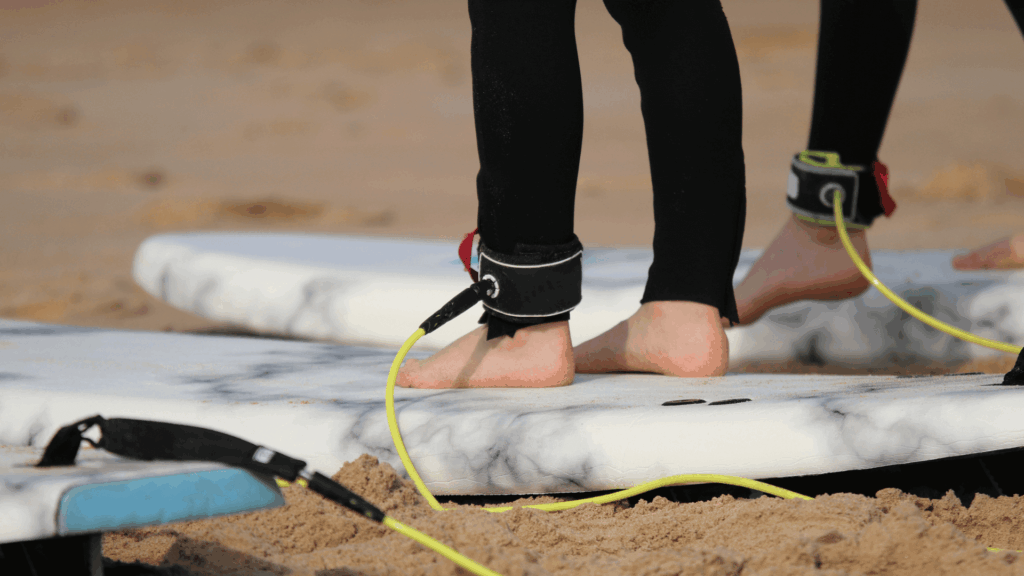
What to Wear Based on Water Temperature
| Temperature | What to Wear |
| 24°C+ (75°F+) | Rash guard |
| 18-24°C (65-75°F) | Springsuit or a thin wetsuit (1-2mm) |
| 10-18°C (50-65°F) | Full wetsuit (3/2mm or 4/3mm) |
| 10°C (Below 50°F) | Thick wetsuit (5 mm+), gloves, boots, and hood. |
Wetsuit vs Rash Guard
Wetsuit: Provides warmth, buoyancy, and protection in cooler water.
Rash Guard: Lightweight sun and skin protection for warm water days.
Fit & Flexibility
- A good wetsuit should feel snug with no loose areas, but still allow for whole movement.
- Look for stretchy neoprene panels and flatlock or sealed seams for better comfort and durability.
Pro Tip: If it feels loose when it’s dry, it’ll always feel looser in the water. Size down, not up!
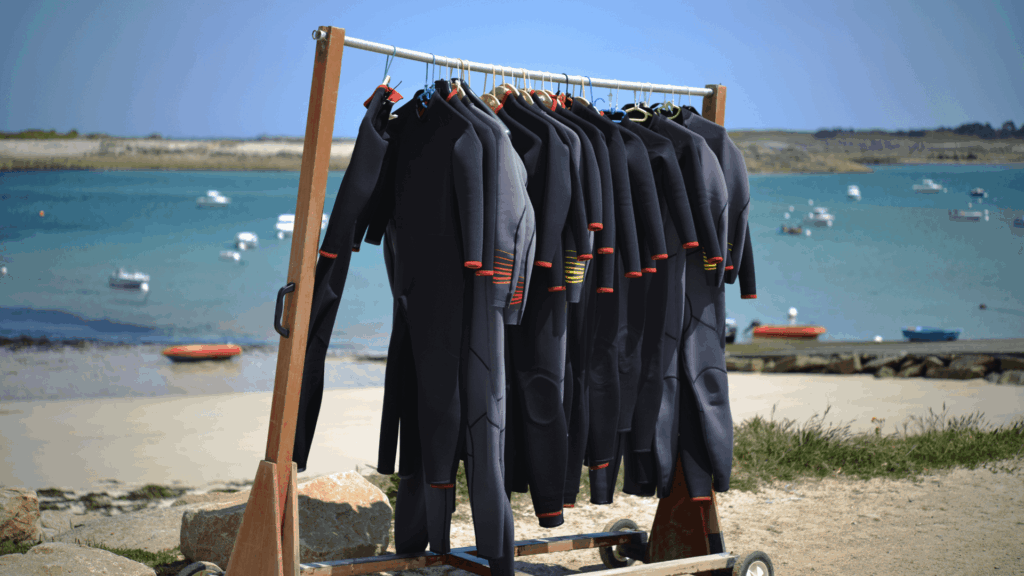
Why You Need Wax in Your Bodyboarding Setup
Bodyboards get slippery when wet. Wax adds traction, helping you stay locked in during paddling, takeoffs, and turns. Focus on the elbow, chest, and hand areas.
Optional Extras for Grip & Control
- Deck Grip Pads: Add extra stickiness and control, especially useful for drop-knee riders.
- Nose Bulbs or Contours: Built-in grip features on some boards that improve handling without wax.
Pro Tip: Use the right wax for the water temperature (cold, cool, warm, or tropical) for the best results.
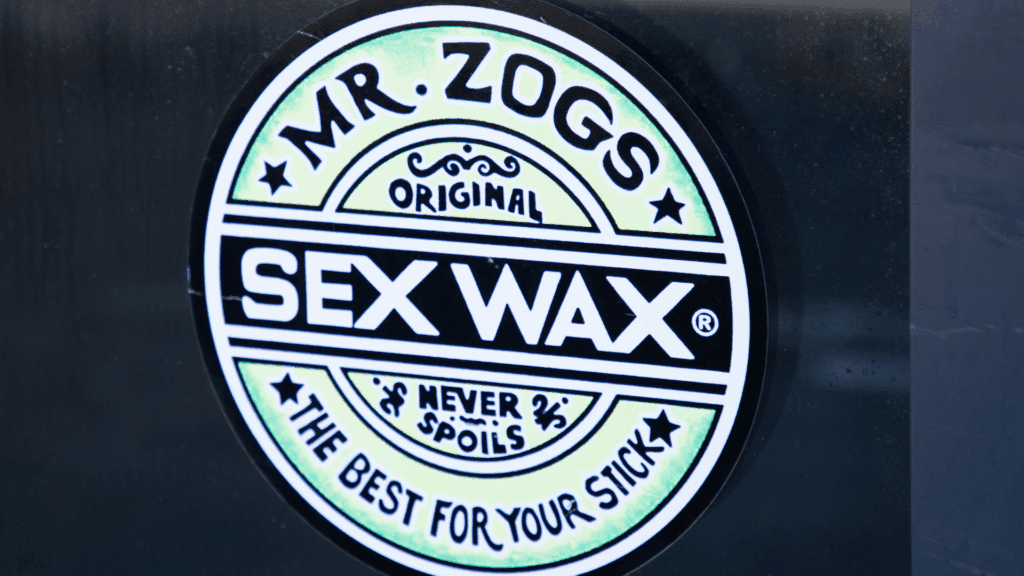
Beginner Vs Advanced Bodyboarding Setups
Beginner Bodyboarding Setup:
- Board: More forgiving, with a softer core (like PE) and a crescent tail for stability.
- Fins: Softer and more comfortable, with a basic shape for easy kicking.
- Leash: Wrist leash is fine; comfort over performance.
- Wetsuit: Basic warmth and sun protection; fit is more important than features.
Beginners‘ focus: Ease, comfort, and understanding the basics.
Advanced Bodyboarding Setup:
- Board: Lightweight, responsive core (like PP), custom shape, bat or crescent tail based on style.
- Fins: Stiffer, high-thrust designs for speed and precision.
- Leash: Bicep leash with premium materials for performance.
- Wetsuit: High-flex neoprene, sealed seams, tailored fit for mobility.
Advanced focus: Speed, performance, control, and durability in all conditions.
What Changes as You Improve
As you get better at bodyboarding, your approach to gear naturally evolves. You’ll start pushing into larger waves, experimenting with different riding styles, and seeking more precision in how your board responds. At this stage, comfort and durability are no longer enough; performance becomes key. You’ll want gear that can keep up with faster turns, bigger drops, and longer sessions. A board that once felt perfect may now feel sluggish or limiting, and soft fins that were once comfortable may start to feel underpowered.
When To Upgrade or Replace Your Gear
It’s time to upgrade when your current setup holds you back rather than helps you progress. If your board is too flexible, your leash keeps getting tangled or slipping, or your fins aren’t giving you the thrust you need, you’ve likely outgrown your gear. On the replacement side, look for signs of wear: a creased or delaminating board, a leash with stretched-out Velcro, or a wetsuit that’s torn or overly stretched will only make your sessions harder. Keeping your equipment in good shape and upgrading thoughtfully ensures that your skills and your setup evolve together.
Investing in the Right Bodyboarding Setup For Your Goals
Choosing the right bodyboarding gear isn’t just about buying what’s popular; it’s about matching your setup to your goals in the water. If your focus is on casual beach days and fun in small surf, a simple, durable board with soft fins might be all you need. But if you’re aiming to ride heavier waves, improve technique, or compete, your setup should be lighter, faster, and more responsive.
Every piece of gear you choose, from your board’s core and tail shape to your fins and leash, should support the kind of rider you want to become. A well-matched setup boosts your confidence, improves your performance, and makes every session more enjoyable.
In the end, good gear won’t make you a great rider overnight, but it will help you get there faster.
Final Tips Before You Hit the Waves
Before paddling out, double-check your setup: make sure your leash is secure, your fins fit comfortably, and your board is waxed in all the right spots. Take a moment to read the conditions, wave size, tide, and crowd levels, which can all affect your session. Most importantly, ride within your limits but keep pushing yourself to improve. Confidence comes with time, and the right gear makes the learning curve way smoother.
Respect the ocean, respect others in the lineup, and most of all, have fun! That’s what bodyboarding is all about.
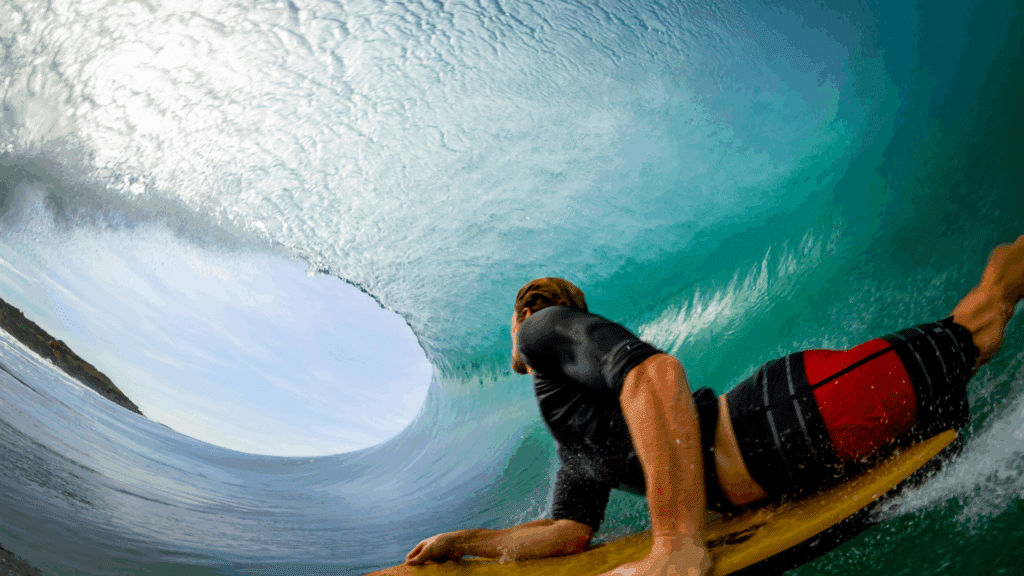
If you enjoyed this article, be sure to check out our previous bodyboarding article – Bodyboarding: All You Need to Know Before Your First Session! We also publish articles on stand-up paddleboarding and winter sports, so be sure to check those out too!

